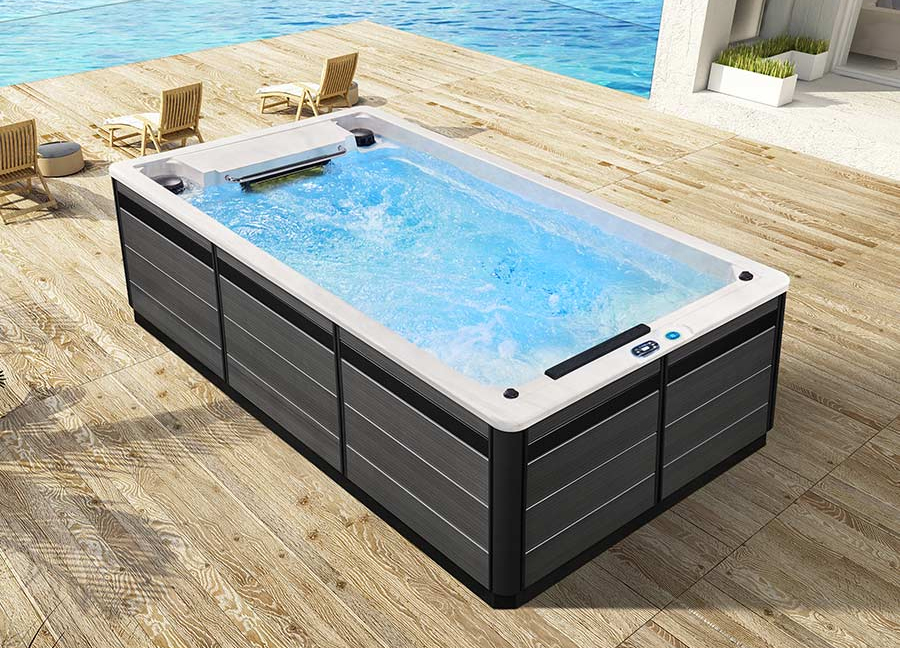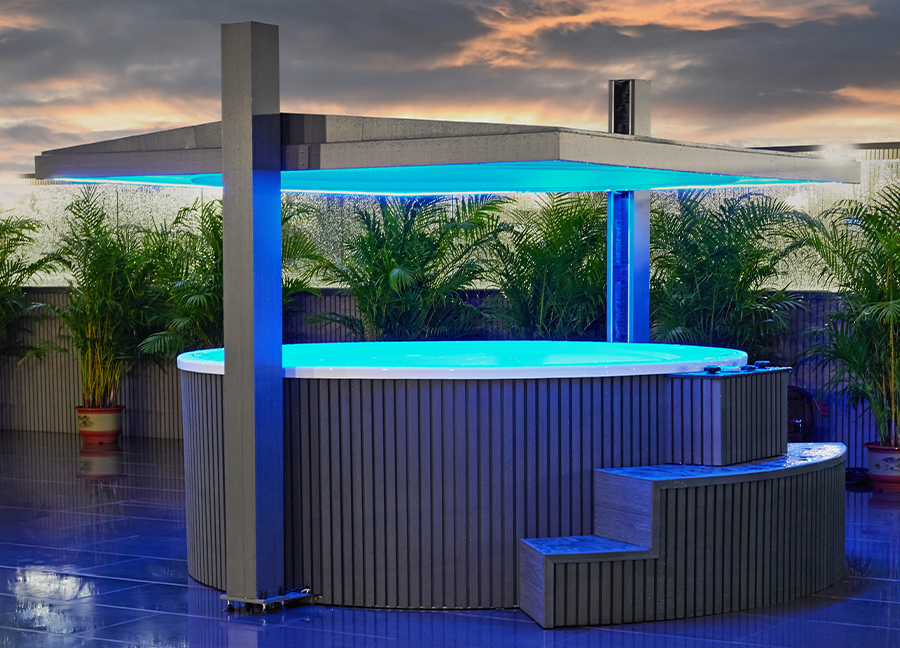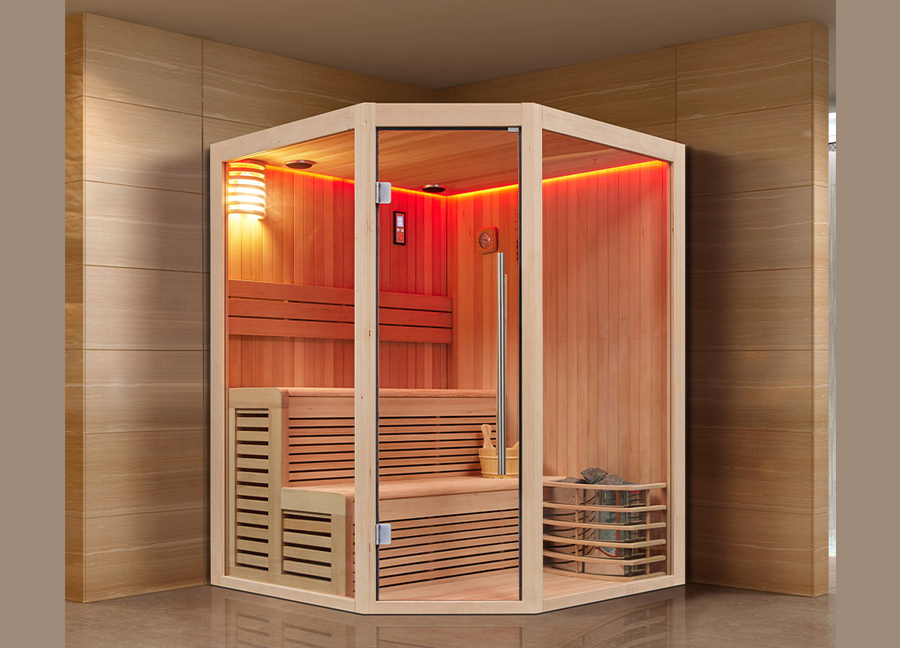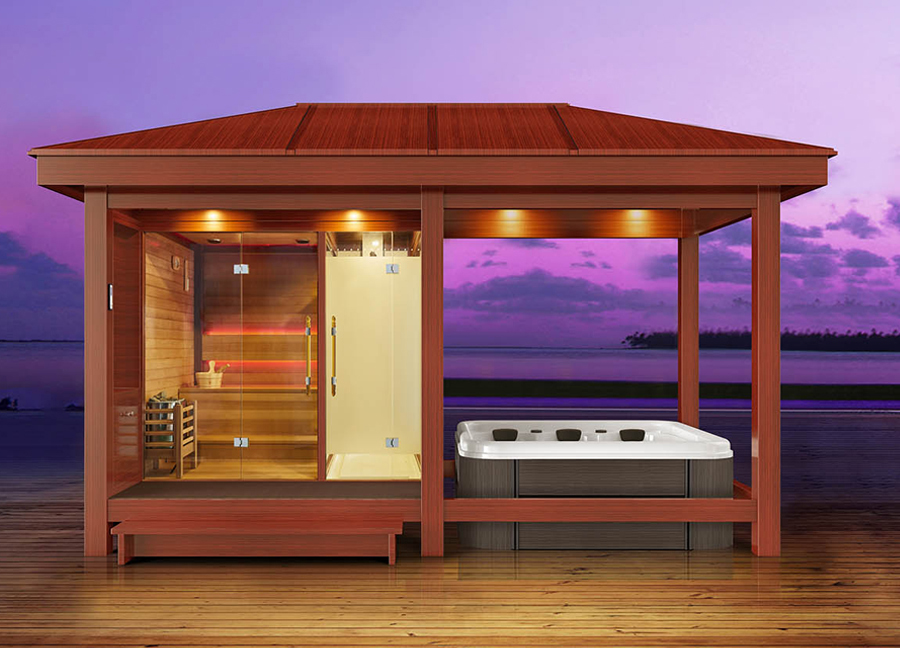As temperatures gradually drop and the cold winds begin to blow, many families begin to wonder: How can I safely winterize my luxury spa hot tub? Whether you plan to continue using it during the winter or temporarily shut it down and store it, proper winter maintenance procedures are crucial.
If not handled properly, problems like frozen pipes, damaged filters, system scaling, or shell deterioration can creep in during the cold winter.
This article will provide a professional perspective on: How to winterize your luxury spa hot tub, how to maximize its lifespan, and what common mistakes to avoid.
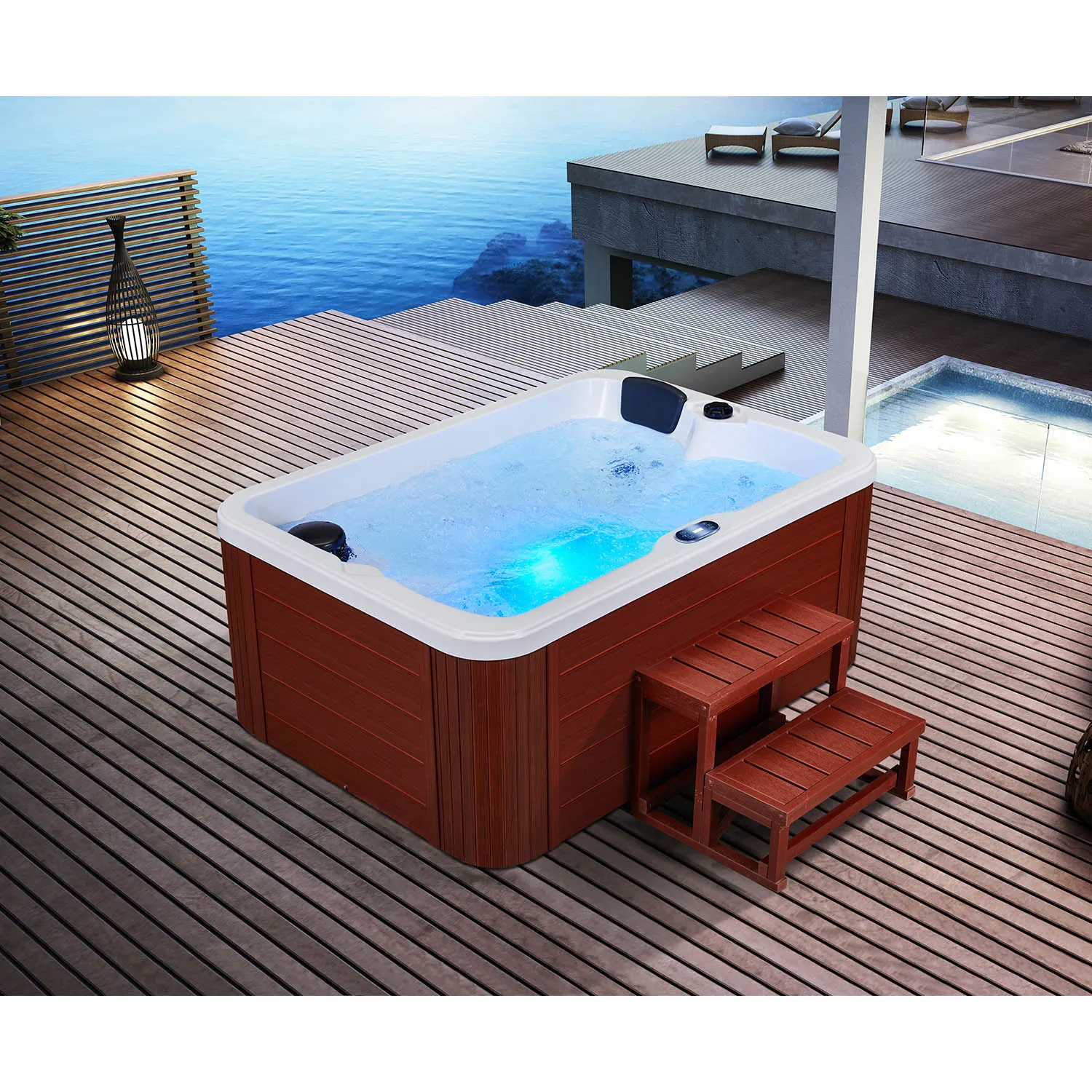
Why do luxury spa hot tubs need to be winterized?
Many people assume that simply putting the lid on and unplugging it constitutes "winter maintenance."
In reality, this practice not only fails to protect the device but can actually cause serious damage.
Luxury spa hot tubs are complex devices that integrate electrical heating, circulation, jetting, and control systems.
If residual water freezes during cold winter temperatures, the following risks arise:
• Pipeline cracks – Even a small amount of accumulated water can rupture pipes when it expands.
• Damage to pumps and filtration systems – If the water isn't completely drained, frozen water can squeeze the inside of the equipment.
• Deterioration of the housing and nozzles – Prolonged exposure to freezing temperatures can cause cracks on the exterior.
• Moisture-induced short circuits in the electronic control system – Condensation or moisture entering the control panel can cause electrical failures.
Therefore, thoroughly winterizing your luxury spa hot tub before winter is a critical step in protecting your investment.
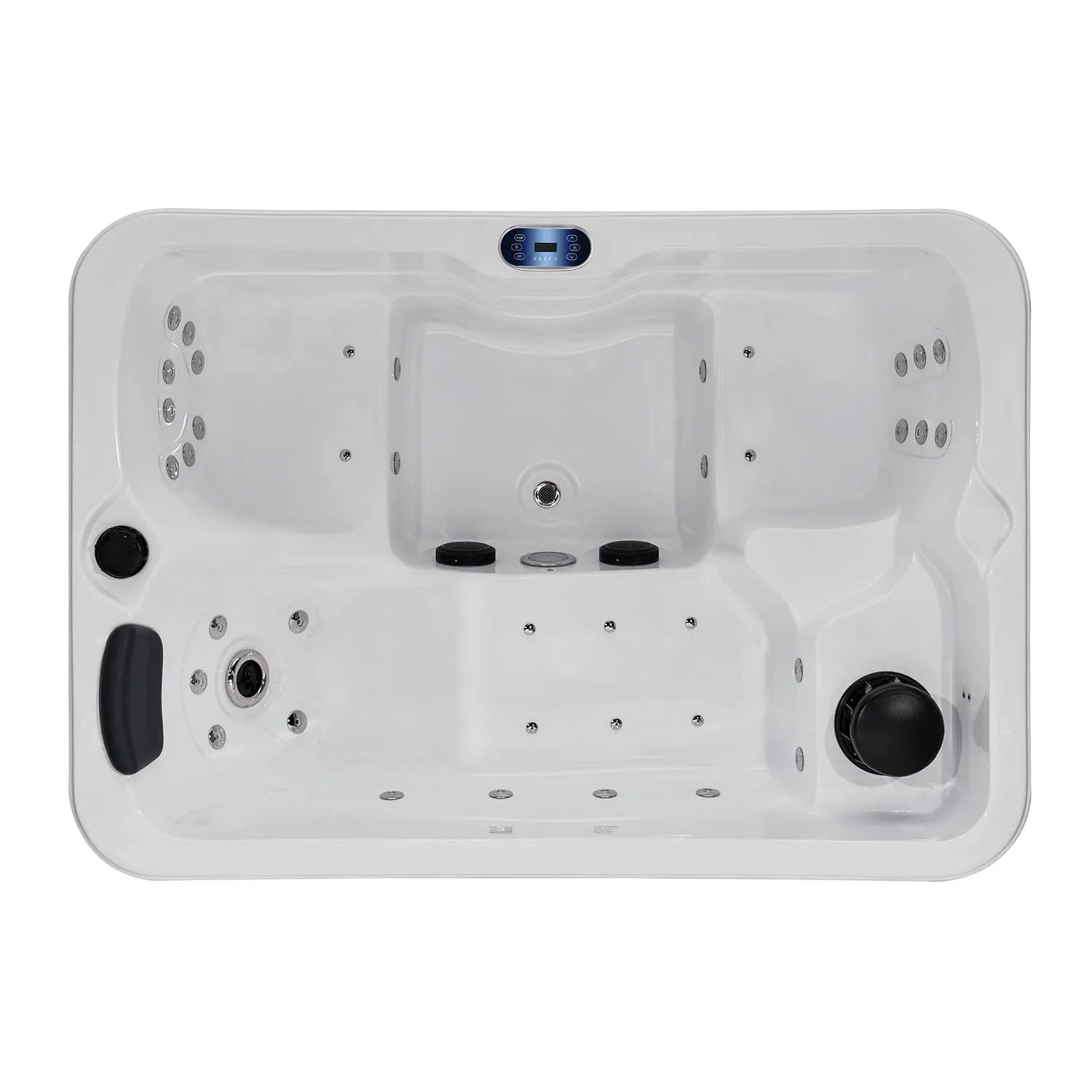
Do I need to completely shut down my luxury spa hot tub for the winter?
This is one of the most common questions many users ask.
The answer depends on whether you plan to use it during the winter.
• If you plan to use your luxury spa hot tub during the winter, ensure it's insulated enough to operate safely in cold temperatures.
• If you plan to leave it unused for the entire winter, drain it thoroughly, clean it, and seal it tightly to prevent any residual water from freezing.
Regardless of which option you choose, winterization preparations are necessary. The difference is:
The former focuses on insulation and operational maintenance, while the latter focuses on drainage and freeze-proof storage.
If I plan to continue using my luxury spa hot tub in the winter, how should I prepare?
For many users, using a luxury spa hot tub in winter is a supreme indulgence—soaking in warm water amidst the chilly air is a relaxing experience.
However, to enjoy this experience safely and comfortably, you must ensure that the system can operate smoothly in low-temperature environments.
The following are essential preparation steps:
1. Check the insulation
Make sure the housing and lid are properly sealed, with no gaps that could allow heat to escape.
If it's an older model, consider adding an additional layer of insulation to the base and lid.
2. Check the heater and thermostat system
Make sure the heating system can maintain a stable water temperature between 37–40°C.
Check the temperature control probe for sensitivity; otherwise, it could cause overheating or underheating.
3. Maintain water circulation
Even if you don't use it frequently, run the filtration cycle daily to prevent the water from stagnating and freezing.
Set the automatic cycle timer to start the pump 2–3 times daily.
4. Use Freeze Protection
Most modern luxury spa hot tubs have an automatic freeze protection mode, which automatically activates heating and circulation when the temperature drops too low.
Make sure this function is enabled and functioning properly.
5. Check the water balance
During the winter, due to the high water temperature, evaporation is reduced, which can easily upset the chemical balance.
Regularly test the pH (7.2–7.6), alkalinity, and disinfectant concentration to maintain cleanliness and hygiene.
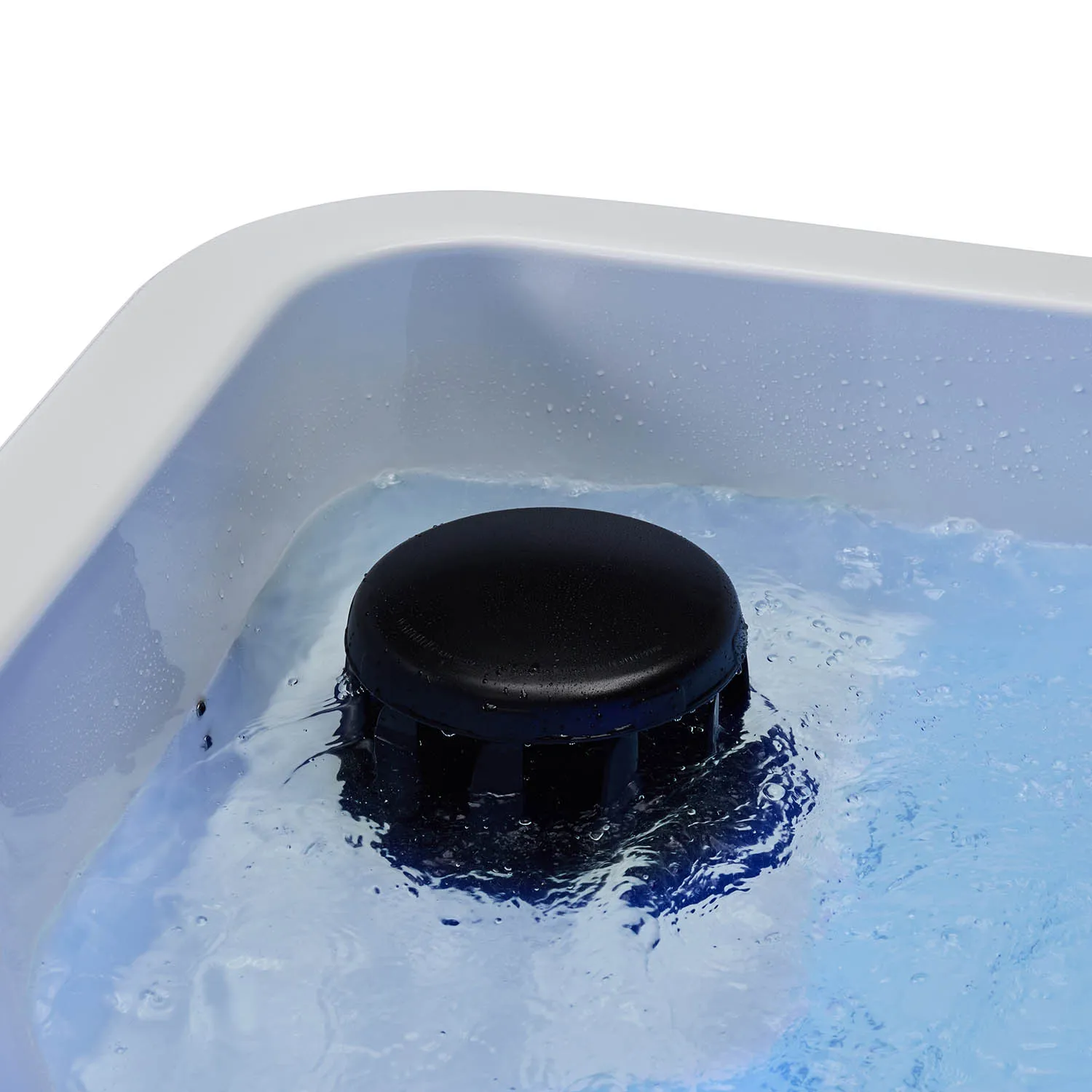
What should I do if I plan to shut down my luxury spa hot tub for the winter?
If you decide not to use your luxury spa hot tub for the entire winter, proper decommissioning procedures are crucial. Here are the steps:
1. Disconnect the power and drain the water
• Turn off the power by unplugging the outlet or turning off the circuit breaker.
• Open the drain valve and drain the water completely.
• Use a wet/dry vacuum to remove any remaining water from the nozzles and pipes to prevent freezing.
2. Clean and Dry the Interior
• Wipe the tub's interior with a mild detergent to remove scale and residue.
• Clean the filter, dry it, and store it separately.
• Thoroughly dry the tub's interior with a towel to remove any remaining moisture.
3. Clean the Piping System
Blow compressed air into the nozzles or use a vacuum to reverse the water flow to ensure all pipes are clear and free of water.
This is the most critical step in the winterization process.
4. Add Antifreeze (Optional)
In some extremely cold regions, you can add non-toxic antifreeze to the pump and nozzles for added safety.
Remember to rinse thoroughly after use before refilling in the spring.
5. Cover and Protect the Tub
Use a thick, well-sealed cover to prevent rain and snow from entering.
If the tub is located outdoors, use a waterproof cover or tent-style cover.
6. Regular Inspections
Even when not in use, it is recommended to inspect the unit monthly to ensure the lid is sealed, the exterior is free of cracks, and the unit is dry and frost-free.
What additional precautions are there for using a luxury spa hot tub in winter?
If you choose to enjoy a luxury spa hot tub in winter, the following are crucial:
1. Pay attention to the temperature difference between entering and exiting the tub
When entering the hot tub from a cold outside, soak slowly to allow your body to gradually adjust to the temperature change.
Afterwards, dry off quickly and wear warm clothing to prevent catching a cold.
2. Avoid using the unit during heavy snow or strong winds
Extreme weather can cause the water temperature to drop too quickly, potentially overloading the system.
3. Maintain a stable water level
Evaporation is less in winter, but splashing or use can still cause the water level to drop.
A low water level can cause the pump to draw air in, damaging the system.
4. Avoid using metal tools to remove snow
When removing snow from the lid, always use a plastic shovel or soft brush to avoid scratching the surface.
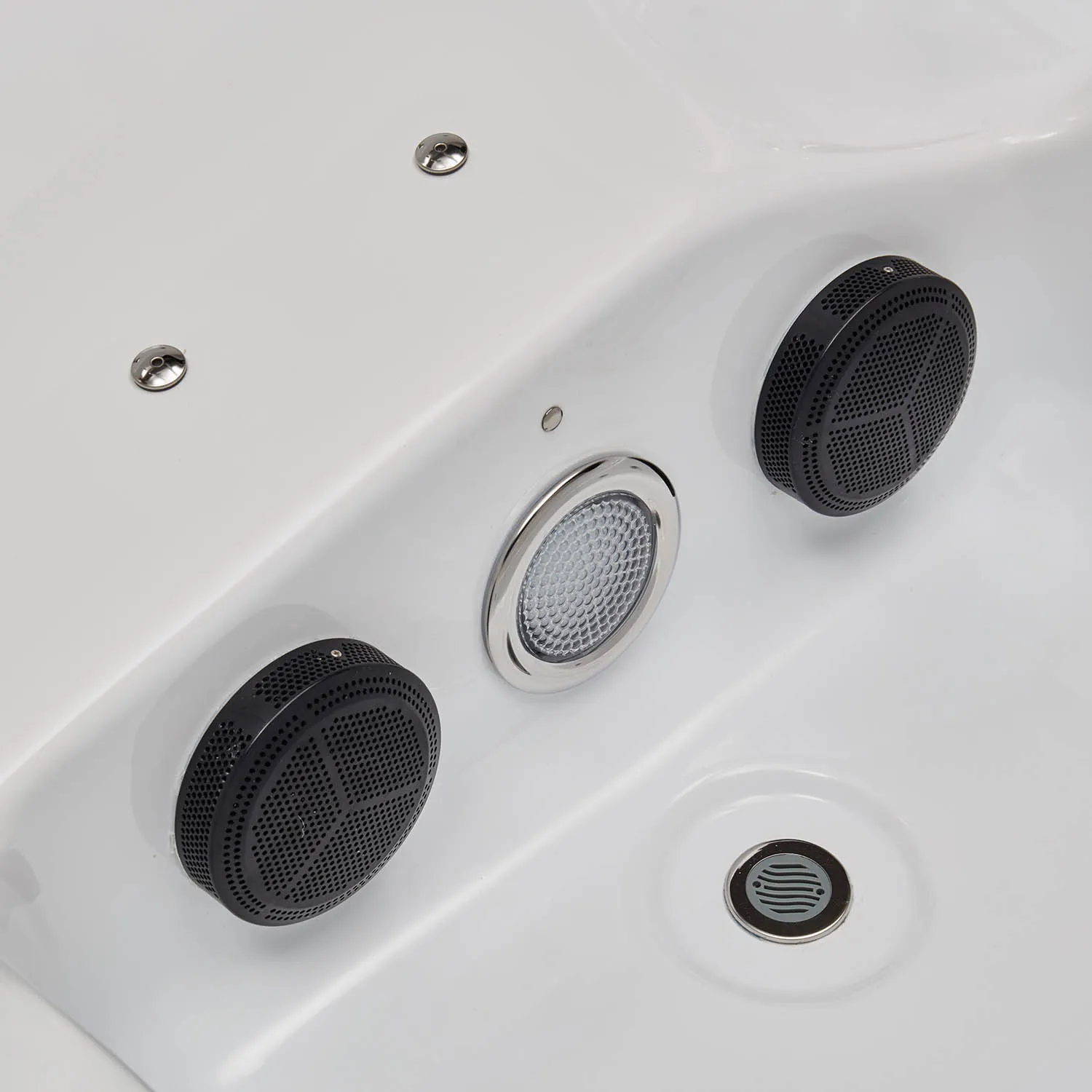
How important is the winter maintenance of a luxury spa hot tub lid?
The lid is your first line of defense during winter.
A high-quality, tightly sealed lid can significantly reduce heat loss, save energy, and prevent the ingress of impurities.
A high-quality lid should have the following characteristics:
• Sufficient thickness: A foam layer of at least 10 cm provides effective insulation.
• Waterproof outer layer: Prevents snow and water from seeping in.
• Well-sealed edges: Reduces heat loss.
• Secure buckles: Prevents strong winds from lifting the lid.
Also, consider purchasing a special lid cover (cover cap) to provide an additional layer of protection against snow and rain.
Do I need to change the water in my luxury spa hot tub during winter?
If you plan to use it all winter, it's recommended to completely change the water in early winter.
This is because:
• New water is more likely to maintain chemical balance;
• Old water may have accumulated impurities or microorganisms;
• Frequent draining of the water in winter is inconvenient, so changing the water early can extend its lifespan.
After changing the water, be sure to test the water quality and add an appropriate amount of disinfectant (chlorine or bromine) to maintain a stable pH.
How can I prevent my luxury spa hot tub from freezing in the winter?
The key to preventing freezing is continuous circulation and heat retention.
• Enable the freeze protection mode to allow the system to automatically monitor the temperature.
• If there's no automatic function, you can set a few manual cycles per day.
• Check the filter for clogs and ensure smooth water flow.
• In extremely cold temperatures, place a small freeze protection heating pad inside the unit compartment (make sure it's waterproof and safe).
Remember: as long as the water keeps flowing, it won't freeze.
What additional accessories should I add to my luxury spa hot tub in the winter?
To improve insulation and user comfort, you might consider the following:
• Insulated pads or base insulation: Reduces heat transfer from the floor.
• Draft screens or sunshades: Prevent cold drafts from directly hitting the tub.
• Non-slip floor mats: Provide safety during freezing weather.
• Automatic heating controls: Maintain a constant temperature and save energy.
While these additional features aren't essential, they can greatly enhance your winter experience.
Do I still need regular maintenance after winterization?
Yes, even after completing all preparations, maintenance shouldn't be completely neglected.
Recommendations:
• Check the temperature and water level every two weeks;
• Test the water quality and refill the chemicals monthly;
• Check the lid for a secure seal;
• Ensure the freeze protection mode or circulation system is constantly running.
Good habits will keep your luxury spa hot tub in top condition all winter long.
What happens if you skip winterization?
Ignoring winterization can lead to:
• Frozen pipes, resulting in costly repairs;
• Damage to the water pump or heating system;
• Mold growth or difficult-to-remove odors;
• System failures during spring restarts.
One oversight could render your entire luxury spa hot tub system useless.
Thus, prevention is always better than cure.
What brands does Yuehua supply, and can I build my own brand with your factory?
Yuehua owns the MEXDA brand, which has been recognized as a “Famous Trademark of Guangdong.” However, we also specialize in OEM production, meaning you can build your own brand with our support. We provide customized design, wholesale supply, and competitive quotes to help you launch or expand your product line. Many overseas clients trust Yuehua because we combine factory low prices with high quality manufacturing.

